Stop overpaying - start transferring money with Ogvio. Sign up, invite friends & grab Rewards now! 🎁
The metaverse often leaves people with a wide array of questions. One of the top questions people ask is, "what is metaverse augmented reality, and how can it be experienced?". This is a fascinating and pressing topic, but like many aspects of the metaverse, it can be tough to wrap your head around. However, let's unpack this and find out how exactly metaverse augmented reality works!
This subject brings into focus a range of other ideas closely associated with the metaverse. These include VR for metaverse, blockchain technology, interoperability, and others. These are all interconnected and overlap by nature. It also prompts the question, "what is the difference between augmented reality and virtual reality?"
What is also fascinating about this topic is that, as the metaverse is relatively new, especially when combined with blockchain and Web3 technology, it means that there are many ways in which the industry could evolve and transform in the future. Let's delve into this and explore what it really means for metaverse augmented reality to exist.

Did you know?
Subscribe - We publish new crypto explainer videos every week!
What Is Tether? (USDT SIMPLY Explained With Animations)


Table of Contents
What is Metaverse Augmented Reality?
Metaverse augmented reality refers to the method by which the physical world can be perceptually altered to reveal a digital world or realm, typically projected via a special metaverse VR headset. These headsets are not fully immersive in the sense that they do not block out the entirety of the physical existence, but rather overlay new aspects onto it.
This implies that this type of VR for metaverse experience is technologically different from others that completely block out the world. Naturally, to achieve metaverse augmented reality, the headsets would need to be clearer, acting more as lenses. This would allow for a merging of the immersion of the physical world with the expansiveness of the digital, essentially making the two conjoined.
In the current day, it is somewhat rare to see discourse on the metaverse and augmented reality together, but there is growing excitement around these two concepts functioning in tandem. Essentially, an augmented reality metaverse would be a realm that utilizes the physical, real-world elements of this world by mixing pixels into a person's field of vision.
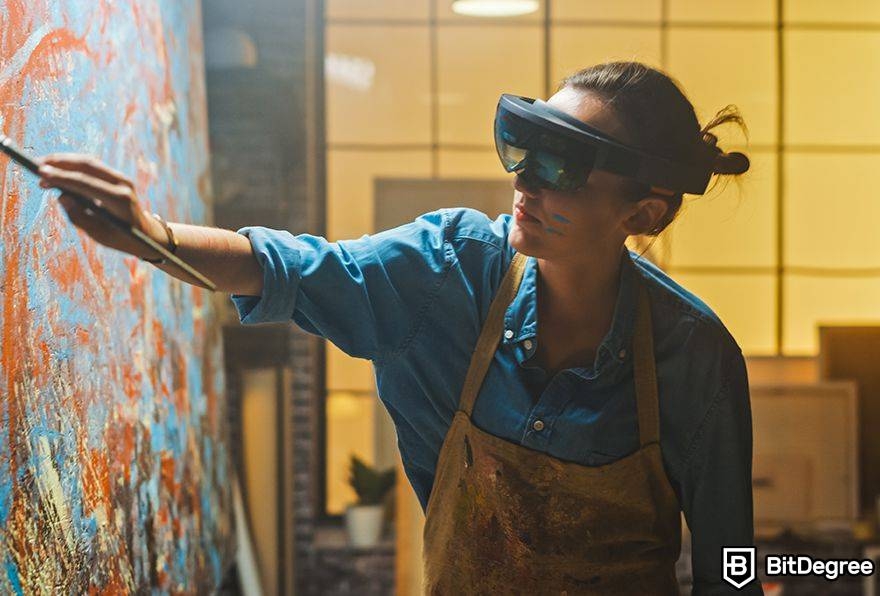
For instance, certain smart wearable adornments such as smart watches could be used in an augmented reality metaverse, where they are worn by your avatar. Gamified tools like trading cards could also be transported over. So could certain clothing items which have been given a special QR code, allowing them to be portable to the metaverse. And depending on how advanced your metaverse equipment is, if it can scan elements of your home, then simple actions like flipping a light switch could illuminate a virtual room as well.
It can be a little tough to come up with concrete examples of how this would work at the moment, as it is the newest frontier in metaverse technology, and it is often hard to see with clarity what the future will look like. However, this should be a good starting point to get your imagination flowing.
Let's take a look at two examples of devices that can offer such an experience to ground this discussion. The most well-known example of a device that could project an AR (augmented reality) scenario would be Google Glass.
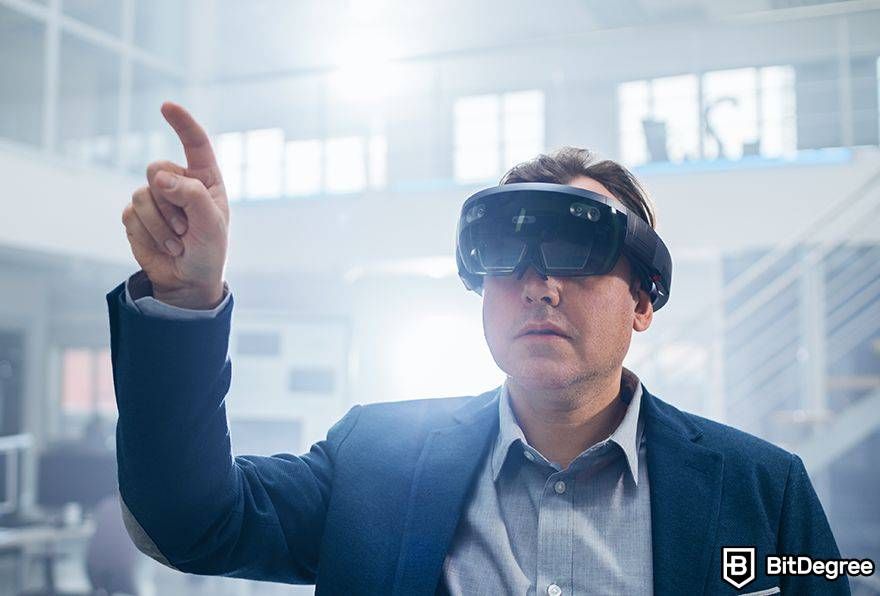
These were a type of lens that would allow you to surf the web and access the internet while simply looking through the glasses themselves. This meant that they doubled up as genuine eyewear, as well as a tool for augmented reality. In fact, their design was minimalist, meaning they simply looked like modified glasses. However, when these were released, the metaverse was not a topic of discussion. Instead, people discussed the notion of mixed reality.
In a nutshell, this is the concept of merging digital features with physical reality. It is an offshoot of augmented reality. Unfortunately, Google Glass was discontinued after several short years. Google never made it abundantly clear why they did this, but there were growing concerns regarding privacy and stalking, where people could secretly photograph and film the individuals around them.
A more contemporary device that could be used for metaverse augmented reality is the Apple Vision Pro. Like Google Glass, this is a tool that goes over your eyes and can overlay pixels and data onto the world in front of you. However, its specifications are much higher, and due to its more recent release, genuine care and attention have been placed towards making it into a type of metaverse equipment.
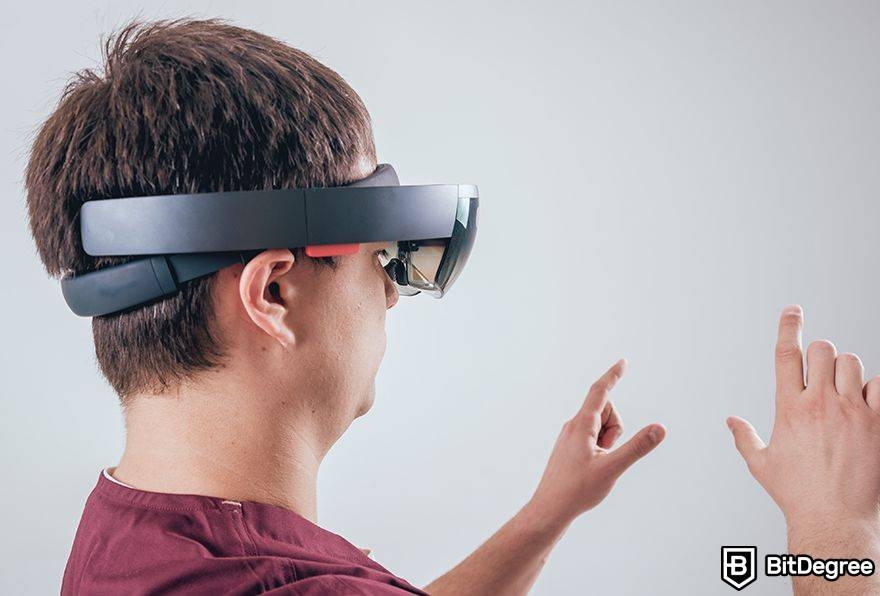
It has also been created in the wake of Google Glass, meaning that the developers learned from the shortcomings of the former tool, and made efforts to avoid them. While Google Glass looked like a normal pair of glasses with some modifications and could take videos and pictures without notifying anyone, the Vision Pro has a very distinctive look that others will easily recognize as a metaverse augmented reality tool. Plus, when videos and pictures are taken, a light is shown to the outside world, so they can be notified.
Without delving too much into either of these tools, they are both great examples of metaverse and augmented reality headsets that allow people to experience physical life along with digital spaces. Let's delve further into this, and focus on the difference between augmented reality and virtual reality. The best way to do this is to look at the benefits and drawbacks offered by a metaverse augmented reality, as opposed to a standard virtual reality version.
Benefits of Metaverse AR
One of the major benefits of metaverse augmented reality, over standard VR for metaverse, is that it will likely be a less disorienting experience. The fact that augmented reality users can still see the physical world around them means that they can ground themselves more easily, and not become too overwhelmed or uncomfortable. The brain is not accustomed to seeing only a pixelated world, and augmented reality can have a more natural feel to it.

For the metaverse, the upshot of this is that people might be able to spend more time interacting in these digital spaces without feeling dizzy or disconnected from reality. Ironically, by experiencing a world that is mixed with physicality, they might be able to get more immersed in terms of emotion and time, as they are not limited by the drawbacks that come with fully encased headsets.
Tied to this is the fact that a metaverse augmented reality would naturally be safer on a physical level, as there is less worry and concern about hitting or bumping into real-world objects that might be in close proximity. When it comes to the sheer immersion that VR for metaverse offers, there is nothing that will take somebody out of the moment more than hitting a real item unintentionally, or being startled by another person approaching or reaching out to them.

This is because, when you are within a VR metaverse, you are meant to suspend your belief as deeply as possible to allow you to become fully immersed within the digital realm. For many, this means theoretically leaving the physical world behind, and almost forgetting it. However, with metaverse augmented reality, this is much less of a concern. The mixing of realities means that the suspension of belief plays less of a role.
Drawbacks of Metaverse AR
Of course, alongside the benefits of metaverse augmented reality come the drawbacks and hindrances. The first and most glaring is the distinct lack of immediate immersiveness. The fact that you are never fully transported into a completely digital world means that you might struggle to wholly integrate into such a space.
The persistence of the physical world could stop some people from completely immersing themselves in the metaverse, so to speak. In truth, this will be very person-dependent, as each individual conceptualizes the world in their own way, and so, for some people, this might be very easy, whereas for others, it might be extremely hard. The best way to discover which person you are is to try this type of metaverse equipment for yourself, and see where you stand.
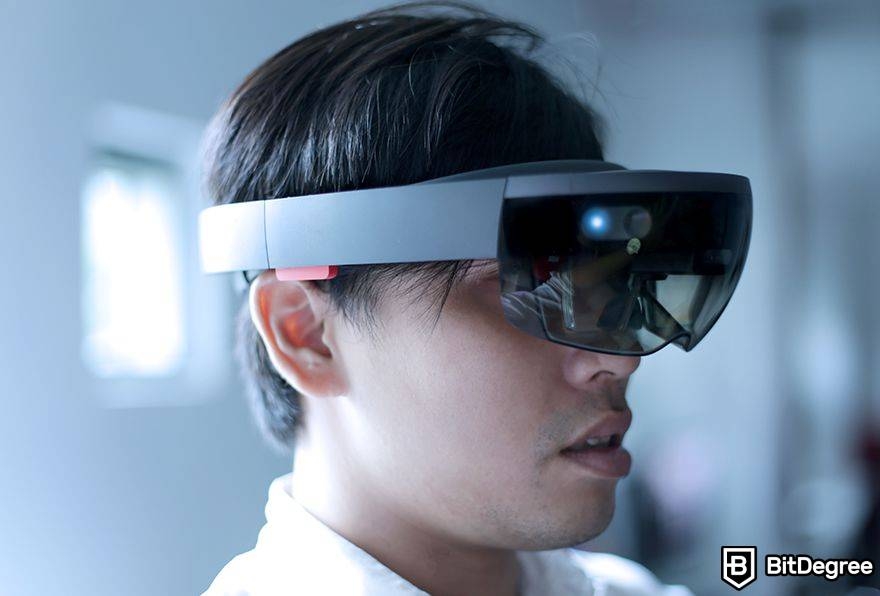
There are also environmental constraints that become present when it comes to the metaverse and augmented reality. The fact that your surroundings play an important role in the construction of your space means that their existence can either bolster or limit the way the metaverse feels. If you live in a small home or are in a small room, then the metaverse could feel a little claustrophobic due to this.
It may also be hard to switch off from external and immediate stimuli. As an example, if you live in a home that has many occupants, and some of those are children or people you must care for, then their presence could prevent full immersion. This is not to say that the sheer fact that you can see your children will stop you from enjoying a metaverse augmented reality, but more so that they could ground you in a way that halts the type of digital transcendence that the metaverse can hypothetically offer.
Metaverse Augmented Reality and Blockchain Tech
The discourse around metaverse augmented reality is still new and budding, and so there are no truly definitive answers to practically any questions we have just yet. However, we are beginning to see how the industry is forming and how experts and enthusiasts are thinking about the nature of it. One of the pressing questions some people have regarding this intersection of metaverse and augmented reality is about how blockchain tech fits into the equation.

When it comes to standard metaverse discussions, involving metaverse VR headsets and other features of immersive digital environments, we often think of blockchain tech as a way of making the industry more interoperable and interlinked. Not only that, but there is a recognition that blockchain tech can help to create spaces where everybody has the ability to gain a stake in them, meaning ownership is shared.
These types of ideas work perfectly when it comes to wholly immersive digital landscapes, but they are slightly harder to process and make sense of for metaverse augmented realities. When a space is intertwined with somebody’s own physical surroundings, there is much less of a concern over who owns the space, because the natural answer would be the person who owns the room owns it.
If, for instance, you use an augmented reality headset to access a mixed reality metaverse from within your bedroom, then it feels a little redundant to question what the rules of ownership are, as your mind will automatically jump to the conclusion that it belongs to you. That being said, there is still much to discuss and unpack with regard to this topic.
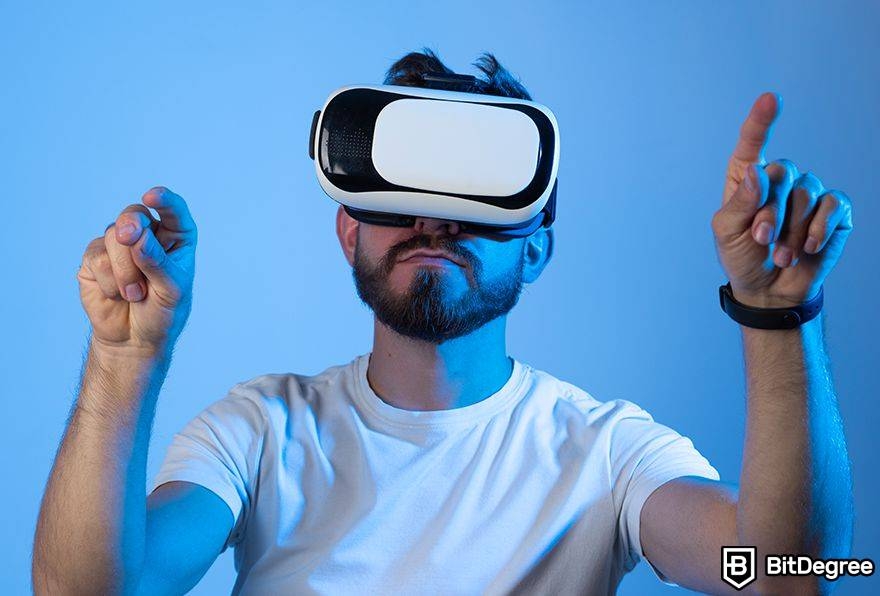
Despite its seeming obviousness, there are kinks that need to be ironed out, and there is still a lot of room for blockchain tech to play a significant role. But to do this, we need to shift our focus away from who owns the virtual space being interacted with, and towards questioning who has a voice when it comes to the development, construction, and implementation of certain features and protocols.
With a standard, immersive metaverse, people can talk about ownership much easier because these metaverses are often viewed as their own regions or places. Therefore, it makes sense to question who owns these locations. This type of thinking has less weight with metaverse augmented realities. Rather, it makes more sense to question who has voting rights when it comes to how new aspects of the metaverse are added, and what should be developed next.
This is all about governance. In the blockchain world, governance is an extremely hot topic, even outside of the metaverse. In a nutshell, it is the means by which people decide what rules should take place within an ecosystem. Generally, this is decided via votes and referendums within a blockchain, where people lock in their decisions with special assets known as governance tokens.

In the metaverse, governance tokens are more important than ever, as those who have the most get to essentially be policymakers, having a voice regarding the nature of an ecosystem, protocol, or service. This begs the question: what sort of policy changes or decisions would people want in an augmented reality metaverse?
It is hard to say with certainty just yet, but some ideas can be explored. Some people may want to vote on what new features are developed. Others may want to have a voice when it comes to how privacy policies and data sharing works. On a more foundational level, people might even be interested in voting on how policies are decided, and who is in charge of such behavior.
These might not sound exciting, but they are deeply significant to any ecosystem, and especially so when it comes to the metaverse, as it is so intimately tied to a person’s life experiences and interactions with their surroundings. For many, the fact that governance can be distributed in this way is one of the best features of blockchain technology. It adds a level of democratization that can be hard to find in spaces that do not integrate these types of tools into their projects.

It is essential to recognize that, while the ownership question might be less relevant in metaverse augmented realities, the importance of democratic decision-making and shared control over the digital space's development is more crucial than ever. This approach can ensure that the metaverse serves its users best, truly reflecting their needs and preferences. Such a metaverse can be dynamic, evolving according to the collective desires of its users.
Blockchain technology can serve as a democratic tool for collective decision-making, ensuring that the metaverse is a space shaped by those who use it, rather than imposed by a central authority. In this light, the role of blockchain technology in augmented reality metaverses could be pivotal, giving people the power to influence and shape their own digital experiences.
Ethical Concerns
Like all 21st-century technological advancements, metaverse augmented realities pose some intriguing ethical questions and topics. Two of which have already been touched upon here. For starters, governance is a very significant focal point of any metaverse, and it is here that blockchain tech can seamlessly fold into the overall architecture of the industry.

The second major point mentioned is with regard to privacy. Back when Google Glass was launched, privacy concerns existed from the perspective of the outsider, i.e., somebody not using the tech themselves. There were worries that they could be filmed without their knowledge or consent. This issue remains pertinent even today, but as AR headsets are built in the shadow of Google Glass, they approach this problem with more direct care and attention.
Nowadays, privacy concerns have shifted away from the outsider, and more towards the first-person perspective. People are increasingly apprehensive that these technologies will siphon their data and use it for financial gain, or for purposes that do not align directly with the individual themselves. This is a deeply pressing fear in the current day, made worse by scandals such as that of Cambridge Analytica, where data was used to sway political votes and elections.
Oftentimes, the horror genre can be used as a social barometer for understanding what people’s most pressing fears are. With this in mind, the television series Black Mirror often explores the theme of privacy backdoors and exploitation within practically every season. In other words, it is a concern that lies heavy on people’s hearts and minds.
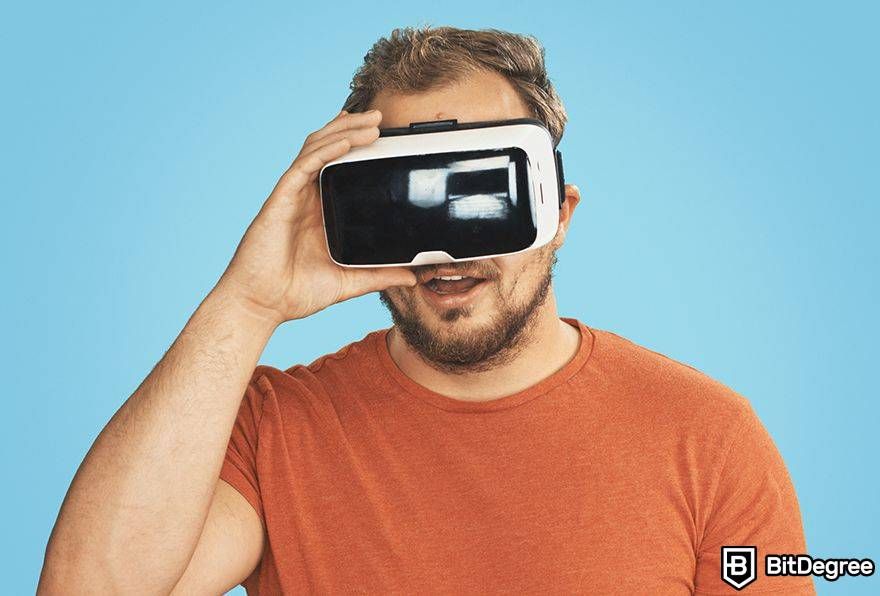
With the advent of AR, this can take on a more serious and worrisome form, as it would be possible for many headsets to scan the surroundings of a person’s home or room, so that they can overlay digital features onto them in a realistic and immersive way. Of course, in the process, they could also learn a great deal about how a person lives behind closed doors, which could be lucrative to potential advertisers or companies who would wish to purchase such data.
The way somebody maintains their home, what they choose to adorn their walls with, the things they collect, and the way they relax can all be exploited by those who wish to create targeted ads. It might seem nonsensical at first, but arguably we are most like ourselves when we are alone, and if AR headsets are used in our bedrooms, then there is a whole wealth of data available for third parties to exploit.
Data of a similar nature has existed in the past, and as such, so have measures that prevent it from falling into the wrong hands. A perfect example of this is Google’s on-screen keyboard for its Android phones. This tool has a way of learning more about each person’s typing habits and becomes more intuitive over time; however, there is supposedly meant to be a system in place that prevents this type of information from being transferred to Google’s servers, meaning it stays locally on the device.

This improvement occurs through federated learning, which is a type of machine learning where each instance of a technology gains more insights and improves on its own, working from local data only. Something similar could potentially happen with AR headsets, where the software and hardware learn more about a person’s life and home and become more intuitive, whilst preventing that information from becoming part of any centralized server or company.
That being said, it requires a significant amount of trust and faith in the tech manufacturers and the metaverse creators to not use this data illicitly themselves and simply lie. This is, yet again, where blockchain technology can step in. By using encrypted protocols, data can be kept locally or be provably limited to each individual user.
This system would still utilize federated learning, but it would be imbued with blockchain tech, offering an additional layer of trustlessness and, therefore, more peace of mind. Ethereum-based metaverse projects could use this approach, along with other ecosystems such as Polkadot or even the Binance Smart Chain.
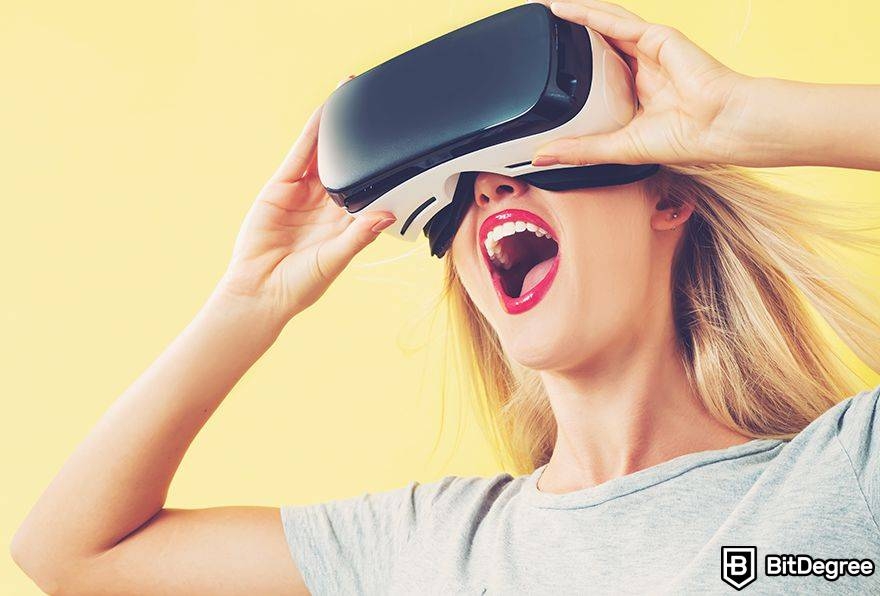
A third ethical dilemma pertains to the way children would interact with metaverse augmented realities. There is a growing debate around how much internet exposure children should have, and this debate is set to become even more heated when it comes to virtual worlds. These are experimental immersive spaces that are still being developed right in front of our eyes, and so we do not know with confidence what they will feel like to the mind of a child.
These metaverse realities could be used as a fantastic means of educating children or helping them socially or intellectually. On the other hand, we could discover that exposure to them leads to stunted development or unusual mental health concerns. At this current time, we do not know which direction this will go in, but it is most definitely something that parents and lawmakers are closely keeping an eye on.
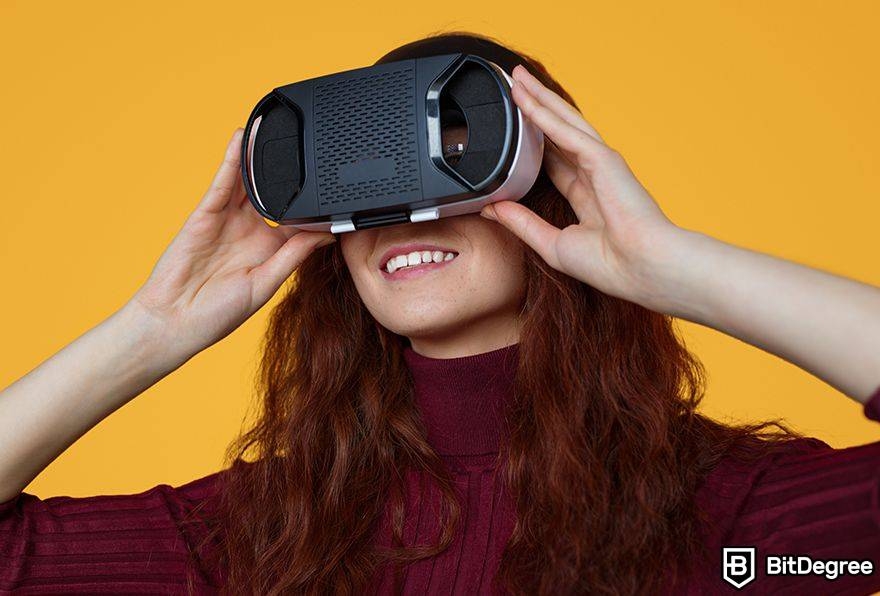
These are just a snapshot of the issues that are prevalent, but they provide a fair indication of what ethical concerns we should be on the lookout for. Very likely, this is just the tip of the iceberg, as we cannot predict what concepts will be most significant once the world of metaverse augmented reality fully takes off.
Much like other technological advancements of the modern era, the way things really unfold is often a little different than anticipated. For example, there may be new questions about inclusivity and accessibility that emerge. As we traverse this exciting frontier, constant vigilance and engagement will be needed to ensure that these new realities are developed and used in ways that are ethically sound and beneficial for all.
Conclusions
Metaverse augmented reality is an exciting area in this current wave of tech. While most attention is paid to VR for the metaverse, the tools and hardware for AR metaverses are getting more sophisticated, meaning that a mainstream landscape that fits within this category could be just around the corner.
It is both exciting and daunting to think about such a topic, as it marks a potentially new moment in our digital history. All metaverse discussions carry this type of feeling, whether they are focused on VR, AR, or even if they mention big names in the crypto and blockchain spaces, such as Unstoppable Domains. There is no escaping the magnificence and scale of this field.
Naturally, as AR hardware gets developed and receives the attention it deserves, the software aspect of things follows suit– this includes the metaverse. Sadly, it appears that at the moment, these tools are relatively pricey, and so an AR metaverse might not be accessible to the average person, which in some ways can feel like the ideas mentioned are distant. But this is not the right way to think about them. As always, hardware will get more affordable, and so it is good to develop ideas around them before that point.
With this in mind, it is meaningful to keep an eye out for all major aspects of the tech world, regardless of whether they can be enjoyed or accessed at the current moment. Businesses are always working hard to bring these projects to the masses, and once that happens, they pertain to everybody on a more immediate level. Hopefully, the world of metaverse augmented reality is fruitful and beneficial to humanity, opening us up to more prospects and positive experiences on a global scale.
The content published on this website is not aimed to give any kind of financial, investment, trading, or any other form of advice. BitDegree.org does not endorse or suggest you to buy, sell or hold any kind of cryptocurrency. Before making financial investment decisions, do consult your financial advisor.








